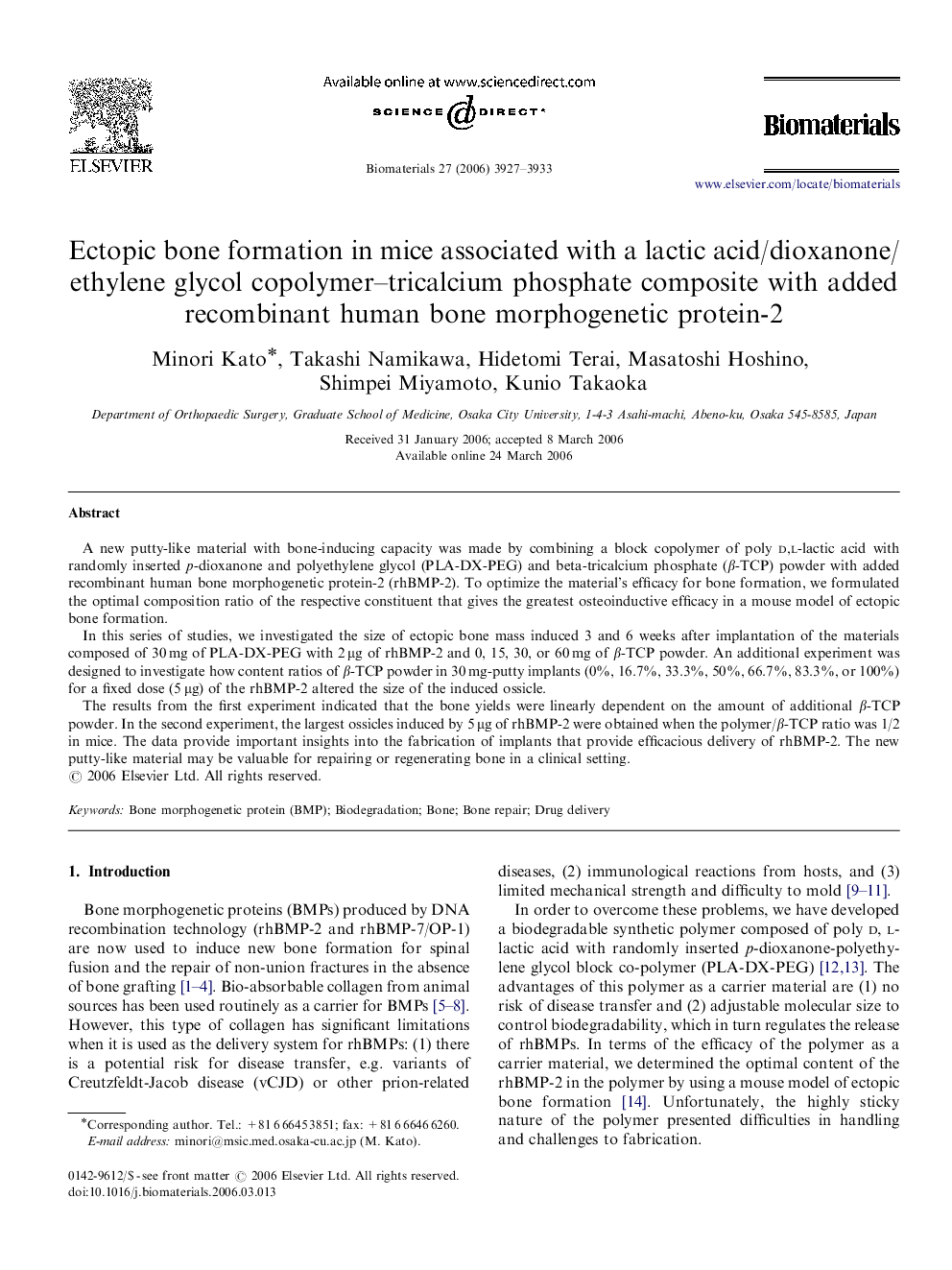| Article ID | Journal | Published Year | Pages | File Type |
|---|---|---|---|---|
| 11399 | Biomaterials | 2006 | 7 Pages |
A new putty-like material with bone-inducing capacity was made by combining a block copolymer of poly d,l-lactic acid with randomly inserted p-dioxanone and polyethylene glycol (PLA-DX-PEG) and beta-tricalcium phosphate (β-TCP) powder with added recombinant human bone morphogenetic protein-2 (rhBMP-2). To optimize the material's efficacy for bone formation, we formulated the optimal composition ratio of the respective constituent that gives the greatest osteoinductive efficacy in a mouse model of ectopic bone formation.In this series of studies, we investigated the size of ectopic bone mass induced 3 and 6 weeks after implantation of the materials composed of 30 mg of PLA-DX-PEG with 2 μg of rhBMP-2 and 0, 15, 30, or 60 mg of β-TCP powder. An additional experiment was designed to investigate how content ratios of β-TCP powder in 30 mg-putty implants (0%, 16.7%, 33.3%, 50%, 66.7%, 83.3%, or 100%) for a fixed dose (5 μg) of the rhBMP-2 altered the size of the induced ossicle.The results from the first experiment indicated that the bone yields were linearly dependent on the amount of additional β-TCP powder. In the second experiment, the largest ossicles induced by 5 μg of rhBMP-2 were obtained when the polymer/β-TCP ratio was 1/2 in mice. The data provide important insights into the fabrication of implants that provide efficacious delivery of rhBMP-2. The new putty-like material may be valuable for repairing or regenerating bone in a clinical setting.
